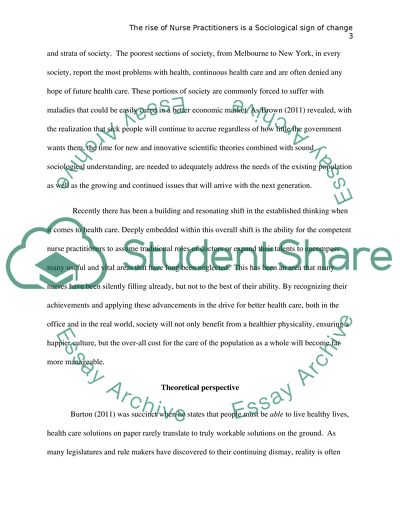Cite this document
(“The Rise of Nurse Practitioners is a Sociological Sign of Change Essay”, n.d.)
The Rise of Nurse Practitioners is a Sociological Sign of Change Essay. Retrieved from https://studentshare.org/sociology/1441979-sociology-of-health-and-health-care
The Rise of Nurse Practitioners is a Sociological Sign of Change Essay. Retrieved from https://studentshare.org/sociology/1441979-sociology-of-health-and-health-care
(The Rise of Nurse Practitioners Is a Sociological Sign of Change Essay)
The Rise of Nurse Practitioners Is a Sociological Sign of Change Essay. https://studentshare.org/sociology/1441979-sociology-of-health-and-health-care.
The Rise of Nurse Practitioners Is a Sociological Sign of Change Essay. https://studentshare.org/sociology/1441979-sociology-of-health-and-health-care.
“The Rise of Nurse Practitioners Is a Sociological Sign of Change Essay”, n.d. https://studentshare.org/sociology/1441979-sociology-of-health-and-health-care.


